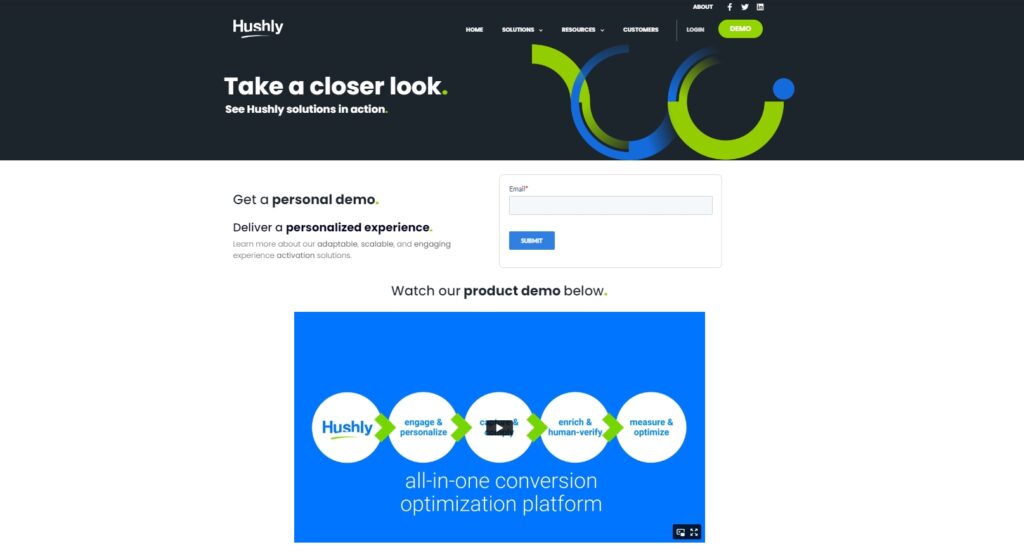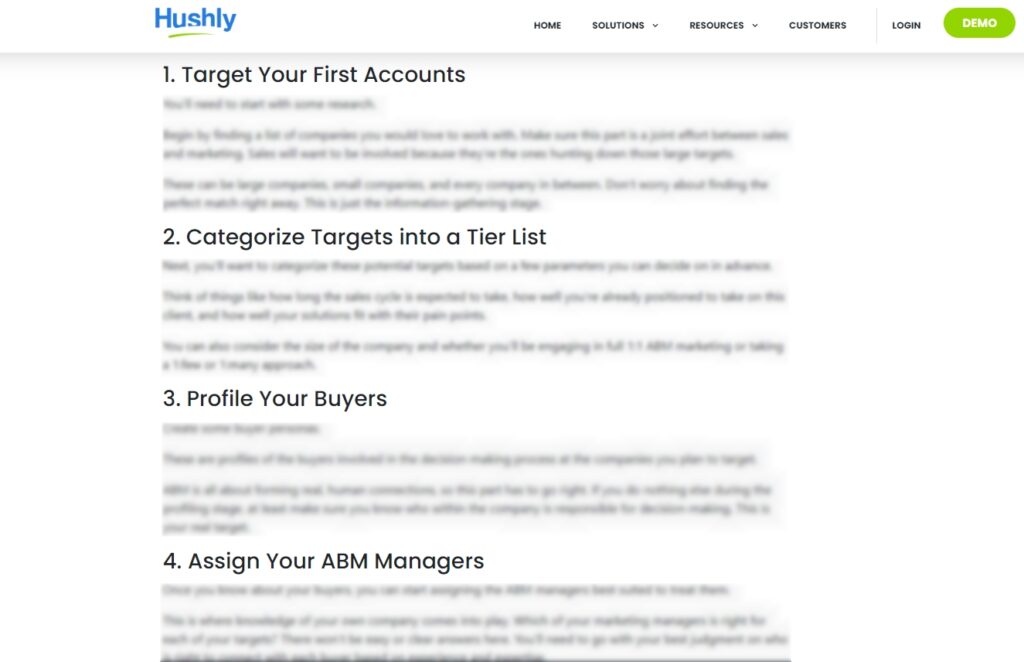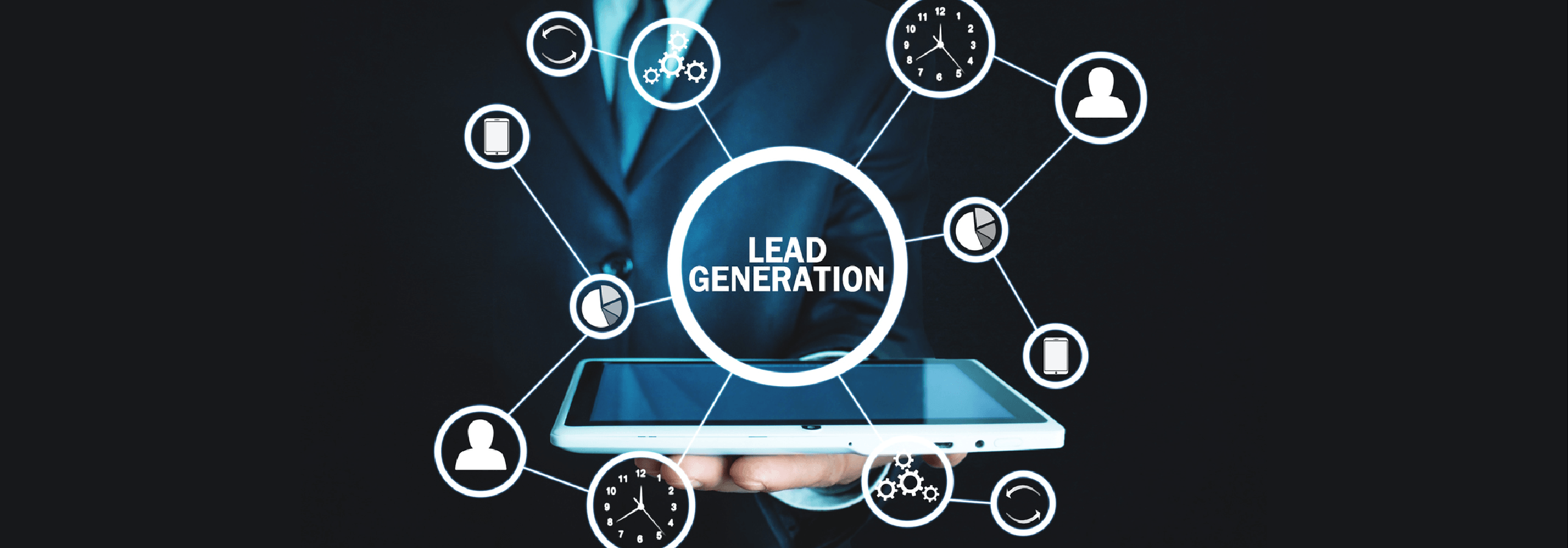In today’s digital age, the best way to capture your target audience’s attention is by providing them with content that’s informative, engaging, and valuable. With approximately 42% of business leaders, security leaders, and IT leaders stating that cyber breaches of their systems have increased since 2020, more and more companies are seeking out cybersecurity solutions. To get noticed, you need to be able to create content for a cybersecurity page that gets found and converts customers.
Once you know how to create content for your cybersecurity website, you’ll be able to attract the attention of a larger audience during a time when cyber threats are at an all-time high. However, before diving into the things you’ll want to consider when creating content, it’s essential to take a moment to understand the two main types of content that are used in cybersecurity marketing.

What Kind of Content Can Be Used in Cybersecurity Marketing?
It’s important to note that there are many ways to approach content for cybersecurity marketing. You can start by creating content for a cybersecurity landing page and a blog.
While the two may seem the same, they’re different approaches to content marketing for cybersecurity.
Creating Content for a Cybersecurity Blog
A cybersecurity blog is a type of content published regularly on your website to educate your target audience and build a reputation for your brand. This material can be broken up into dozens of different categories and verticals to address the specific needs of your ideal customer.
These pieces of content usually consist of short- and long-form content that utilizes images and video to help guide your readers and keep them engaged. Some examples may include:
- How-to guides on protecting an e-commerce site from hackers
- An educational blog on cybersecurity threats in the past 12 months
- A tutorial on how to secure a brand’s social media account with a video guide
Creating Content for a Cybersecurity Landing Page
Landing pages are a must-have for any cybersecurity brand selling a product or service. Landing pages are dedicated pages on your site that offer a single purpose and a call to action to drive visitors to make a purchase, book a call, download a free trial software, etc.
For those in the cybersecurity space, these landing pages are usually product pages that explain the features and benefits of your software. However, they can also be pages for gated content like white papers and case studies.

Source: Hushly
In this example, our landing page is simple and sweet. We encourage interested visitors to check out our product demo, and if they like what they see, they can request a demo of their own.
To Succeed in Cybersecurity Content Marketing, You Need Both Landing Pages and a Blog
So, which should you prioritize when creating content for a cybersecurity website? Landing pages or blogs?
The answer is both.
Creating content for your cybersecurity website is more than just putting out blog posts and/or landing pages. If the goal is to sell a product, you absolutely need to have a mix of landing pages and educational content.
Landing pages give your audience a direct path to your offer, and educational blog posts should provide your audience with high-quality, relevant information on common queries and concerns. When done right, this combination not only provides a solution to their needs but proves to them that you’re a company they can trust with their security needs.
How to Create Content for a Cybersecurity Page: 5 Things to Consider
Creating content for a cybersecurity page is no small feat. You need to consider your target audience, the latest trends in the field, and the overall purpose of the page. It can be daunting, but with a few essential tips and tricks, you can craft content that resonates with your readers and keeps them coming back for more.
Let’s explore five things to consider when creating content for a cybersecurity page.
1. Know Who Your Target Audience Is
You’ve probably been told time and time again that you need to know who your target audience is before you start writing. While it may seem redundant, it’s a point that’s still often overlooked — especially in an industry as diverse as cybersecurity.
The cybersecurity industry is made up of dozens of different verticals, each with its own niche, needs, and problems. When writing content for a cybersecurity page, you need to know precisely who you’re speaking with to ensure that your message is clear and on point. The easiest way to do this is to have a clearly outlined client persona. These personas should be complete enough that you can start writing content with confidence and a sense of purpose.
2. Implementing Proper SEO Practices
If there’s written content on your page, you must implement search engine optimization (SEO) practices. SEO practices ensure that your content is seen, read, and appreciated by your target audience.
Some of the most vital SEO practices to keep in mind when creating and sharing content are:
- Doing proper keyword research to ensure you’re touching on relevant topics.
- Making sure you’re optimizing visual elements with appropriate meta tags.
- Including your keyword research results in your content.
3. Sharing Both Trending and Evergreen Content
You can create a variety of content for your cybersecurity page and have a mix of both trending and evergreen content. Trending content is timely and relevant content, often related to current events or topics in the news.
Evergreen content remains relevant and valuable over time. It’s often related to timeless topics and is less prone to changes in popularity. For example, evergreen topics might include security best practices or how-to guides.

Source: Hushly: 8 Steps to Get Your ABM Program Started
By incorporating both types of content into your cybersecurity page, you’ll be able to reach a wider audience and better engage with readers.
4. Writing Content for Your Readers
Focus on the needs and interests of your readers and develop content that helps them with their cybersecurity needs. Providing easy-to-understand, relevant, and helpful content will help your readers become more informed about cybersecurity and remain engaged with your page.
To keep your audience engaged, you can create relevant content and share it in a personalized content hub. Creating a content matrix that aligns with your buyer personas and addresses relevant content pillars ensures that your content creation efforts deliver the best possible results.
5. Creating and Sharing Images and Videos
Images and videos effectively engage visitors, explain complex topics, and share important insights. Use images and videos that are relevant to the topics you’re discussing, visually appealing, and informative. Additionally, the text associated with the images should be concise, to the point, and SEO optimized so search engines can easily crawl and index them.
Create Cybersecurity Content that Converts With Hushly
To create content that reaches your target audience, consider tailoring your content to the buyer’s personas and addressing the relevant content pillars. Additionally, creating and sharing images and videos can engage visitors and explain complex topics.
Hushly offers several content solutions to help you create and share cybersecurity content that converts. From our content marketing solutions to our demand capture tools — we have you covered.
Want to see how Hushly can help you make the most of your cybersecurity content? Request your demo today.




